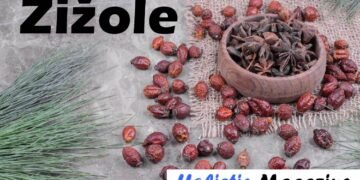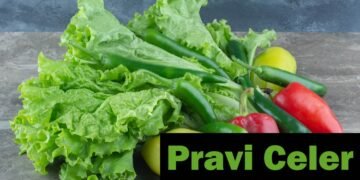Introduction
Koriandri, also known as coriander or cilantro, is an aromatic herb from the Apiaceae family, celebrated for both its culinary and medicinal properties. Scientifically called Coriandrum sativum, it holds a unique position in kitchens and wellness traditions around the world. What makes Koriandri particularly special is its dual identity: the bright green leaves, widely known as cilantro or Chinese parsley, are used as a fresh herb, while the dried seeds, often called coriander, serve as a warm, nutty spice. In India, it is popularly referred to as “dhania.” These multiple identities across regions reflect its vast culinary adaptability. From spicy curries in India to tangy salsas in Mexico, Koriandri has proven itself as an indispensable ingredient that crosses geographical, linguistic, and cultural borders with ease.
The Botanical and Scientific Profile Koriandri
Taxonomy
Koriandri belongs to the Apiaceae family, which includes other popular herbs such as parsley, fennel, and carrot. As an annual flowering plant, it completes its life cycle—from germination to seed production—within a single growing season. Its scientific name, Coriandrum sativum, is well recognized among botanists and herbalists alike. Despite being easy to grow, this herb demands proper care to deliver its full potential in flavor and nutrition.
Appearance and Growth Characteristics
The Koriandri plant typically grows up to 60 cm tall, showcasing delicate, feather-like leaves that are flat and lobed. These leaves resemble parsley at first glance, yet their scent immediately sets them apart. Small clusters of white or pale pink flowers appear as the plant matures. These blossoms eventually produce spherical, brownish seeds that serve as the spice component. The plant’s life stages include germination, leaf development, flowering, and seed formation. Interestingly, Koriandri has flat leaves throughout, unlike parsley which may also feature curled variants. Each part of the Koriandri plant—from root to seed—offers unique uses, making it an agricultural and culinary gem.
History and Origins of Koriandri
Ancient Civilizations
Koriandri has traveled through time, tracing its roots back to ancient civilizations. Archaeological findings show that coriander seeds were discovered in the tomb of Pharaoh Tutankhamun, indicating their high value in Ancient Egypt. Ancient Greek and Roman physicians not only used it to flavor food but also for medicinal tonics and perfumes. In the Vedic texts of India and early Chinese herbal guides, Koriandri appears as a healing plant believed to support digestion and energy flow. This long history of documented use reflects its enduring status in human civilization. For thousands of years, people have treasured Koriandri not only for taste but also for symbolic and health-related purposes.
Spread Across Continents Koriandri
With the expansion of global trade routes such as the Silk Road and maritime spice networks, Koriandri spread across continents. Merchants, monks, and travelers carried it to new lands where it quickly became part of local agriculture and cuisine. European colonization further accelerated its global presence, embedding it deeply into Latin American, Middle Eastern, and Southeast Asian food traditions. Over time, Koriandri became more than just a spice—it became a cultural symbol interwoven into religious festivals, traditional remedies, and family cooking rituals. Its adoption by various civilizations illustrates a shared human appreciation for this versatile and flavorful plant.
Where Koriandri Grows Today
Ideal Climate and Soil
Koriandri thrives best in warm, sunny climates with well-drained, loamy soil. Ideal temperatures for growth range between 15°C and 25°C, though it can tolerate mild variations. This herb prefers soil with a slightly acidic to neutral pH level (6.2 to 7.0). Regular but moderate watering ensures strong root development without waterlogging. The plant is best sown during spring or early fall to avoid extreme heat or frost. With minimal effort and proper sunlight, Koriandri grows well in gardens, containers, and even small kitchen pots. Its short growing cycle and easy maintenance make it perfect for both home gardeners and large-scale farms.
Global Cultivation
Today, Koriandri is cultivated in nearly every corner of the globe. India leads in production, followed by Morocco, Mexico, and Egypt. These countries export large quantities of coriander seeds for global markets, fueling demand in both the culinary and pharmaceutical industries. Organic farming of Koriandri is also on the rise, especially in Europe and North America, where consumers are seeking cleaner, pesticide-free options. This global cultivation effort supports not just food industries but also livelihoods for thousands of small farmers who rely on Koriandri as a sustainable crop. Its growing economic footprint showcases its increasing relevance in modern agricultural markets.
Culinary Uses of Koriandri
Fresh Leaves (Cilantro)
Fresh Koriandri leaves offer a burst of herbal brightness that enhances countless dishes. Their citrusy, slightly peppery flavor makes them ideal for garnishing soups, salads, and curries. In Mexican cuisine, cilantro is a must-have for salsa and guacamole. In Indian cooking, it adorns curries and chutneys with fragrant vibrancy. Thai dishes rely on Koriandri for balance and aroma. The leaves are best added at the end of cooking or used raw to preserve their volatile oils. Despite their delicate structure, they hold intense flavor, transforming even simple meals into culinary delights.
Seeds (Coriander)
Koriandri seeds bring warmth, sweetness, and spice to the table. When roasted and ground, they develop a deep, nutty profile that complements spice mixes such as garam masala, curry powder, and ras el hanout. These seeds are often used in baking, pickling, and meat rubs. Unlike the leaves, the seeds endure heat well and can be incorporated early during cooking. Their essential oil, linalool, adds both flavor and health benefits. From stews and sauces to marinades and bread, coriander seeds elevate recipes with their complex yet comforting notes.
Creative Modern Uses
Beyond traditional applications, Koriandri now finds its way into smoothies, herbal teas, and infused oils. Chefs experiment with Koriandri dressings, pestos, and even desserts. Homemade Koriandri chutneys and dips are popular in fusion cooking. Foodies use the seeds in chocolate, cocktails, and artisan bread. This modern evolution reflects the herb’s incredible versatility. Whether you’re a gourmet chef or a health-conscious home cook, Koriandri offers endless opportunities to enhance taste while boosting nutritional value. Its creative uses continue to expand as global palates evolve.
Nutritional Profile of Koriandri
Koriandri is not only flavorful but also nutrient-rich. Fresh leaves contain high levels of vitamins A, C, and K, all essential for immune strength, skin health, and bone development. A 100-gram serving provides around 6748 IU of vitamin A, 27 mg of vitamin C, and 310 µg of vitamin K. The herb also contains iron and magnesium, which support muscle function and oxygen transport. Meanwhile, the seeds are a good source of dietary fiber and contain essential oils like linalool, offering antioxidant protection. These nutrients work together to promote holistic wellness, making Koriandri an ideal addition to a health-forward diet.
Health Benefits of Koriandri
Digestive Support
Koriandri is renowned for aiding digestion. Its seeds, when brewed into tea or soaked in water, can stimulate digestive enzymes and reduce bloating. Many traditional systems like Ayurveda recommend Koriandri water for treating indigestion and acidity. Its carminative properties ease gas and support gut comfort. Including Koriandri in meals helps your body process food efficiently and maintain balance.
Antioxidant and Anti-Inflammatory
Linalool, an essential oil found in Koriandri seeds, has potent antioxidant and anti-inflammatory effects. These compounds help neutralize free radicals, which can damage cells and lead to chronic disease. By reducing inflammation, Koriandri may alleviate symptoms of arthritis and promote cellular repair. Its natural compounds act as gentle protectors within the body, reinforcing resilience from the inside out.
Blood Sugar Regulation Koriandri
Preliminary studies suggest that Koriandri may help regulate blood sugar levels. Animal trials show increased insulin secretion and better glucose management when coriander extracts are consumed. Though more research is needed in humans, this potential makes Koriandri especially promising for individuals managing diabetes or insulin resistance. Its role in maintaining glycemic balance highlights its growing use in nutritional therapy.
Heart and Cholesterol Benefits Koriandri
Koriandri supports cardiovascular health by reducing harmful LDL cholesterol and increasing beneficial HDL cholesterol. Its antioxidant-rich profile helps prevent oxidative stress, a major contributor to heart disease. The seeds’ ability to manage lipid levels and reduce blood pressure adds to their cardioprotective reputation. Consuming Koriandri as part of a balanced diet contributes to long-term heart wellness.
Detoxification & Heavy Metal Chelation
Coriander leaves have shown promise in removing heavy metals like lead, mercury, and arsenic from the body. This detoxifying effect is known as chelation, where compounds bind to toxins for elimination. Koriandri’s detox properties make it valuable for urban dwellers exposed to pollutants. It acts as a natural cleanser, purifying both body and system without harmful side effects.
Skin Health and Antimicrobial Activity Koriandri
The antibacterial and anti-inflammatory compounds in Koriandri can support clear, healthy skin. Topical application of its extract may help reduce acne, irritation, and fungal infections. It can also calm rashes and enhance skin tone. Herbalists have used coriander seed oil in creams and balms, acknowledging its natural ability to heal and protect. For beauty inside and out, Koriandri is an effective ally.
Koriandri in Cultural and Religious Traditions
India
In India, Koriandri or dhania is deeply embedded in food culture and rituals. It is offered in Hindu temples and used during marriage ceremonies to symbolize abundance. As a daily kitchen staple, it unites families through familiar, comforting flavors. The plant’s sacred associations highlight its spiritual and practical importance in Indian life.
Middle East & Mediterranean
Koriandri is an essential part of Mediterranean and Middle Eastern diets. Used in festive meals like tagines, kibbeh, and lentil stews, it also appears in herbal preparations and health tonics. Its inclusion in harvest festivals and religious feasts marks its enduring place in traditional customs. In these regions, Koriandri represents both hospitality and wellness.
Latin America
In Latin America, particularly Mexico and Peru, Koriandri is celebrated in family meals and street food culture. Fresh leaves are essential in salsas and ceviche. Generations have passed down Koriandri-rich recipes, making it a central part of culinary identity. The herb helps connect families and communities across time and table.
Growing Koriandri at Home — Step-by-Step
Planting Instructions
Koriandri grows best in early spring or fall. Choose a sunny location with loose, well-drained soil rich in organic matter. Sow seeds directly into the soil, spaced one inch apart and lightly covered. Avoid transplanting as the plant dislikes root disturbance. Water consistently to maintain moist but not soggy soil.
Care and Maintenance Koriandri
Thin the seedlings once they sprout to prevent overcrowding. Regularly trim the leaves to encourage bushy growth and prevent early flowering. To avoid bolting in hot climates, provide partial shade. Natural pest deterrents like neem oil can be used for protection. With minimal intervention, Koriandri grows lush and flavorful.
Harvesting Tips Koriandri
Begin harvesting leaves once the plant reaches 15 cm in height. Use scissors to cut the outer leaves, allowing inner ones to continue growing. For seeds, let the flowers dry and brown before collecting the seed pods. Dry and store in airtight containers. You can freeze fresh leaves in ice cubes to extend their use.
Koriandri and Modern Wellness Trends
Koriandri is now a staple in modern wellness culture. From detox juices and green smoothies to natural skin remedies and herbal teas, it features prominently in clean living movements. Vegan, paleo, and Ayurvedic diets all include it as a superfood. Demand for organic Koriandri is surging as consumers seek chemical-free, nutrient-dense herbs. Its essential oils are used in aromatherapy to ease anxiety and uplift mood. As interest in plant-based health solutions rises, Koriandri continues to shine as both a traditional and contemporary wellness hero.
Common Issues and Myths Koriandri
“Soapy” Taste Controversy
Some people find Koriandri leaves taste like soap. This reaction is due to the OR6A2 gene, which heightens perception of certain aldehydes. While unfortunate, this sensitivity is harmless and rare. Most people experience the herb’s bright, citrusy notes instead.
Allergies and Sensitivities
Though rare, allergic reactions to Koriandri can occur. People sensitive to celery or carrots may also react due to shared botanical families. Symptoms include itching or swelling, and medical advice is recommended if they appear. Always introduce herbs mindfully.
Storage and Shelf Life
Fresh Koriandri wilts quickly. To extend its life, wrap it in a paper towel, place in a zip bag, and refrigerate. Alternatively, freeze chopped leaves in olive oil or water cubes. Seeds, when stored dry and airtight, last up to a year without losing potency.
Economic and Global Market Relevance Koriandri
India leads global it production, supplying both domestic and international demand. Coriander is a key export for countries like Morocco and Mexico as well. It’s used in spice mixes, pharmaceuticals, and essential oils. The organic market for it is booming, reflecting consumer demand for sustainable and clean herbs. It also supports livelihoods for smallholder farmers in developing regions, proving that this humble herb is a powerful economic engine.
Quick Comparison – Leaves vs Seeds
| Feature | Fresh Leaves (Cilantro) | Dried Seeds (Coriander) |
|---|---|---|
| Flavor | Citrusy, herbal | Warm, nutty, earthy |
| Usage | Garnish, raw dishes | Cooking, spice blends |
| Shelf life | Short | Long (dried) |
| Nutrients | Vitamins A, C, K | Fiber, essential oils |
| Heat sensitivity | Wilts easily | Heat-resistant |
How to Use More Koriandri in Your Cooking
To enjoy more it, sprinkle fresh leaves over hummus, soups, and tacos. Infuse oil with crushed seeds for drizzling over grilled vegetables. Add coriander powder to lentils, marinades, or roasted chickpeas. Blend it into chutneys with mint and lemon for a zingy side. Garnish rice or quinoa dishes for a flavorful finish. These small steps add brightness and nutrition to daily meals.
Conclusion
It is more than just a kitchen herb—it is a symbol of taste, health, and tradition. From ancient Egyptian tombs to your modern dinner plate, its journey reflects a plant that transcends time and borders. With bold flavor, healing properties, and rich cultural meaning, it stands as a global treasure. Whether you sprinkle its leaves or grind its seeds, you bring history, wellness, and flavor into every bite. it is not just a spice—it’s a story told through scent, flavor, and time.
FAQs
Q1. What is Koriandri used for?
It is used as both a herb and spice for cooking and health purposes.
Q2. Are cilantro and it the same?
Yes, cilantro refers to it leaves, while coriander is its seed form.
Q3. Is it good for digestion?
Yes, it aids digestion and reduces bloating, especially when consumed as coriander tea.
Q4. Can I grow it indoors?
Yes, Koriandri grows well in pots with sunlight and regular watering.
Q5. Why does it taste like soap to some people?
A specific gene (OR6A2) makes some people perceive its flavor as soapy.
More Article Links :
Pravi Celer Benefits: Eat, Grow, and Heal Naturally


















Discussion about this post